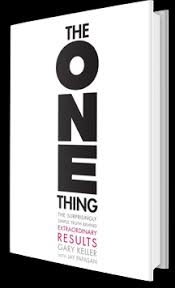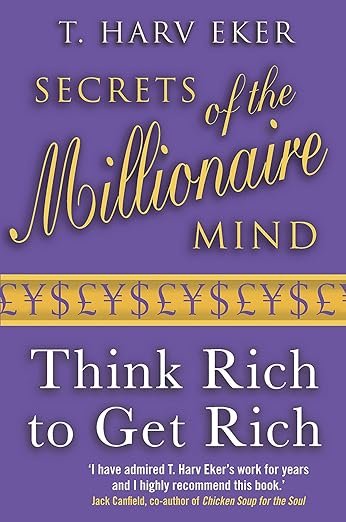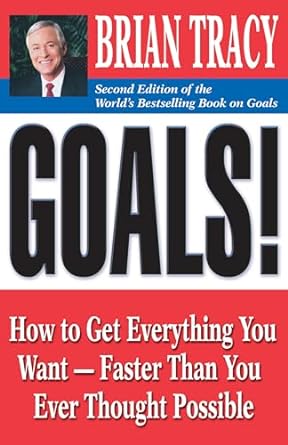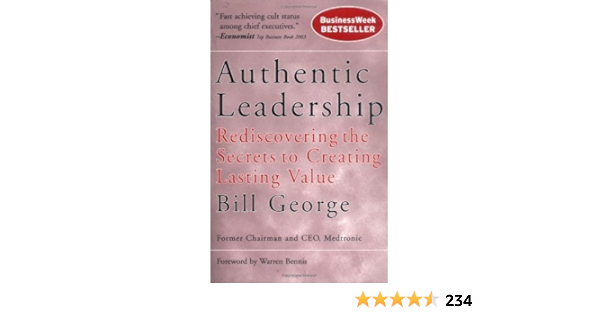Discover “The One Thing” by Gary Keller and Jay Papasan: How to Focus on What Truly Matters
Introduction to the “The One Thing” Concept
The book “The One Thing”, written by Gary Keller and Jay Papasan, offers a unique and effective approach for achieving personal and professional success. The central idea of this work is based on the principle that concentrating on one essential thing can yield exceptional results. This philosophy urges readers to identify and prioritize what is truly important, thereby avoiding distractions that can undermine efforts to reach goals.
The foundations of the “The One Thing” philosophy focus on identifying that activity or goal which has the greatest impact on the desired outcomes. The authors emphasize that instead of dispersing energy and resources across multiple tasks, one should focus on what holds the highest value. This approach not only improves efficiency but also clarifies the requirements regarding time and resources, thereby facilitating better management of them.
Adopting this mindset requires a paradigm shift in the way we organize our lives. Prioritization is not just about choosing one main objective, but also about cultivating habits that facilitate its achievement. In a world full of distractions and information overload, the ability to focus on “The One Thing” becomes essential for success. According to the authors, this clear direction will not only bring tangible results in a career but will also improve the quality of personal life. Thus, readers are encouraged to embrace this philosophy, which not only simplifies objectives but also amplifies the efficiency with which they can be accomplished.
- Gary Keller
- The One Thing By Gary Keller
- 978-1848549258, 1848549253, 9781848549258
The Authors’ Story
Gary Keller is a successful entrepreneur and a recognized author, being the co-founder of Keller Williams Realty, one of the largest real estate companies in the United States. Throughout his career, Keller has demonstrated a remarkable ability to identify market trends and develop effective strategies to help real estate agents maximize their potential. His vast experience in business and leadership has influenced the depth of the concepts presented in the book “The One Thing”. Keller understood the importance of focusing on one objective, a mindset cultivated from his own experience in managing multiple responsibilities simultaneously.
On the other hand, Jay Papasan is an expert in the field of publishing and career development, with over two decades of experience in marketing and personal development. As the Vice President of Keller Williams, he played a crucial role in developing the education and training strategy for agents. Papasan is known for his writing and communication skills, which help transform complex ideas into easily understandable concepts. This ability to simplify ideas was essential in crafting “The One Thing”, where the central idea is to prioritize what matters most.
Together, Keller and Papasan bring a powerful combination of practical and theoretical experience, allowing them to approach topics of general interest from various perspectives. This combination resulted in a work that not only articulates a philosophy of more efficient work but also provides readers with the necessary tools to focus on what truly matters in their professional and personal lives. Their influential careers are reflected in the ideas presented in the book, transforming “The One Thing” into a valuable guide for anyone seeking to improve productivity and personal satisfaction.
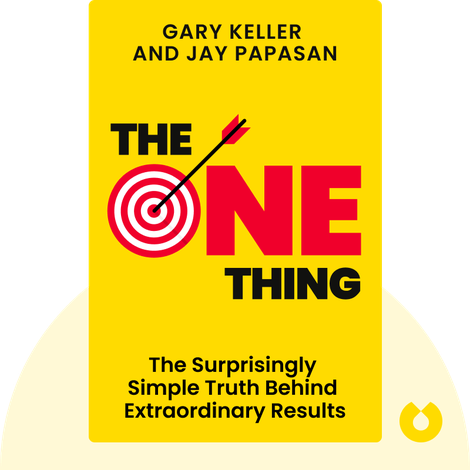
Why Focus on a Single Thing?
Focusing on a single objective carries numerous benefits that not only optimize efforts but also maximize results. In a world that is becoming increasingly busy and full of distractions, the approach proposed by Gary Keller and Jay Papasan in “The One Thing” emphasizes the importance of dedicating time and resources to one significant priority. Studies have shown that individuals who concentrate on a single objective not only increase their productivity but also improve their personal and professional satisfaction.
A relevant example comes from the field of sports, where athletes who specialize in one discipline significantly enhance their performance compared to those who frequently switch between sports. For instance, Michael Phelps, a multiple Olympic champion, dedicated thousands of hours to training to improve his skills in swimming. The result was an impressive track record, demonstrating that discipline and focus on a single objective bring exceptional results.
Also, in business, companies that concentrate their activities on one product or service have a clear competitive advantage, managing to retain their customers and improve quality. Companies such as Apple, which has emphasized the continuous innovation of its core products, have succeeded in establishing themselves on international markets, generating extraordinary loyalty from consumers.
In conclusion, dedicating all attention to a single objective not only simplifies decision-making processes but also leads to tangible achievements, be it in professional or personal life. This approach can provide a solid foundation for long-term success.
Identifying the “One Thing” in Your Life
Identifying “The One Thing” is an essential process for bringing clarity to your personal and professional life. It is important to understand that each individual may have different goals and priorities, making this exercise both personal and relevant. An effective method to start this search is to reflect on your core values. Ask yourself which aspects of your life give you the greatest fulfillment and which activities bring you joy and satisfaction. Writing these down can help correlate these experiences to what might be “The One Thing” for you.
Another useful tool is the method of essential questions. You can use a system based on questions, such as: “What would I do if I only had one year to live?” or “What activity will help me achieve my most important dream?” These questions can highlight the most relevant aspects of your life and help you prioritize your goals. Additionally, a visual approach, such as creating a mind map, can facilitate the process of identifying that activity or goal on which you want to concentrate.
Last but not least, it is essential to free yourself from social pressure and external expectations. Sometimes, “The One Thing” is influenced by what we might want to believe we should do, instead of focusing on what we truly desire. Even a simple SWOT analysis (strengths, weaknesses, opportunities, and threats) can help overcome difficulties in clarifying your own desires. In this way, you can engage in a self-discovery process that will facilitate finding that sui generis task that matters most to you.
Effective Strategies for Staying Focused
One of the biggest obstacles to focus is effective time management. To remain focused on “The One Thing”, it is essential to organize your daily schedule so that you prioritize tasks that directly contribute to achieving your objectives. An effective method is using the Pomodoro Technique, which involves working for 25 minutes followed by a short 5-minute break. This cycle helps maintain focus while avoiding mental exhaustion.
Eliminating distractions is another key component in staying focused. Identifying and reducing the factors that can interrupt your workflow is vital. This may include turning off notifications on your phone or computer, creating a dedicated workspace that minimizes external noise, and even setting aside intervals during which you do not check emails or social networks. A calm work environment fosters focus on the main task.
Adopting clear daily routines can also improve the ability to concentrate. Set a fixed schedule for starting and ending activities, including moments dedicated to reflecting on your progress. Journaling can be a useful practice to evaluate daily achievements and adjust goals according to circumstances. This practice allows you to consistently focus on “The One Thing” and adjust your strategy to stay on track.
By combining these strategies, you will be able to maintain your focus and progress in the desired direction. Focusing on what truly matters thus becomes a realizable process, not just an abstract concept.
The Long-Term Impact of Focusing on a Single Objective
Focusing on a single objective, as proposed by authors Gary Keller and Jay Papasan in “The One Thing”, can have a significant and lasting impact on one’s career and personal life. This approach involves identifying that essential element which, if accomplished, could make the rest of the tasks easier to manage or even irrelevant. By dedicating resources and efforts to one goal, individuals can achieve more consistent and notable results.
Many people who have adopted this principle have experienced a radical transformation in both their professional and personal lives. For example, an entrepreneur who focused exclusively on developing a single product line managed to considerably increase his revenues and consolidate his brand. This focus not only simplified business decisions but also enhanced the efficiency of his operations, thus generating a long-term competitive advantage.
In addition to business success, many individuals have reported that applying the principles from “The One Thing” has improved their mental and personal health. A mother who decided to prioritize time spent with her family over various social obligations discovered not only an improvement in family relationships but also an unprecedented level of personal satisfaction. Therefore, focusing on a single objective is not limited to a career; it also extends to the interpersonal sphere, allowing individuals to enjoy a more balanced and fulfilling life.
Thus, choosing to pursue a single objective can be considered an effective strategy for achieving long-term success and happiness, changing not only the professional trajectory but also the quality of personal life.
Challenges in Applying the “The One Thing” Concept
Applying the “The One Thing” principle, as outlined in the book by Gary Keller and Jay Papasan, can be a challenging process for many individuals. This concept emphasizes the importance of focusing on a single essential task that will bring the most significant results. However, the challenges in integrating this idea into daily life are diverse, starting with social pressure.
In an interconnected world, social influence can lead individuals to stray from the “The One Thing” principle and engage in multiple activities simultaneously. For example, colleagues and friends may have high expectations regarding active participation in various projects, which can lead to scattered attention and the assumption of responsibilities that do not contribute to personal goals. This atmosphere can create a sense of guilt among those who choose to focus on a single activity.
External expectations represent another significant challenge. The burden of satisfying the demands of employers or family, for instance, can force individuals to juggle multiple tasks at the same time. As a result, individuals may feel overwhelmed, which can affect their ability to focus on what they truly consider important. Additionally, managing multiple responsibilities, such as work, family, and other commitments, can make it extremely difficult to adopt an approach based on “The One Thing”.
Ultimately, facilitating this process requires not only strong willpower but also effective strategies for managing time and priorities, in order to overcome these obstacles and fully benefit from focusing on the essential.
Reviews and Feedback on “The One Thing”
The book “The One Thing” by Gary Keller and Jay Papasan has been well received by both readers and critics, generating a mix of diverse opinions. Among readers, many appreciated the approach focused on identifying and honing in on one major objective, which allowed them to improve their productivity. Reviewers have noted that the central message, which encourages readers to simplify the complexities of life by prioritizing tasks, resonates deeply in today’s modern world full of distractions.
Another frequently mentioned aspect is the clarity and accessibility of the writing style. Readers have observed that, through concrete examples and relevant case studies, the authors manage to engage and inspire, making the concepts easy to understand and apply. Additionally, many readers have reported that the practical recommendations and exercises suggested in the book have helped them develop a more organized and clear mindset, leading them toward personal and professional success.
On the other hand, there have also been critiques regarding “The One Thing”. Some readers have expressed that, while the concept of focusing on a single objective is valuable, it can be, in certain situations, unrealistic. Many people face multiple responsibilities and demands, and applying the approach promoted by the authors may seem impossible. This has led to the feeling that, although the book provides a solid foundation for productivity, it is not always applicable in real life.
In conclusion, “The One Thing” continues to generate discussion and analysis, having a significant impact on readers from various fields. Regardless of personal opinions, it is clear that its message of focusing on the essential captures attention and encourages reflection on how we approach our lives and goals.
Conclusion: Transform Your Life Through Simplification
The book “The One Thing” by Gary Keller and Jay Papasan emphasizes the importance of focusing on what is truly essential in both personal and professional life. In a world where we are often overwhelmed by multiple tasks and constant distractions, the message conveyed by this work is exceptionally valuable. The approach of simplification is an effective antidote to the complexity of modern life. Through the authors’ guidance, readers are encouraged to identify a single objective or activity that generates the greatest benefits. This process of refining priorities not only helps increase efficiency but also promotes a sense of achievement and personal fulfillment.
Applying the concept of a single priority can be implemented in different areas of life. Whether it is about career, relationships, or personal development, focusing on one aspect allows individuals to allocate more time and resources to its development. This approach not only alleviates the stress caused by multitasking but also contributes to better time management. Therefore, readers are urged to engage in a process of introspection, analyze their current life, and ask themselves: “What is that one activity that will help me progress the most?”
By simplifying objectives and focusing on the essential, “The One Thing” is not merely a book about productivity, but also a guide for a more satisfying life. With practical applications and fundamental principles, the authors invite readers to redefine success, thereby transforming their lives into a more meaningful experience filled with genuine achievements.
Frequently Asked Questions
What does the concept “The One Thing” represent and what is its central idea?
The “The One Thing” concept is based on the idea of prioritizing a single essential objective that can have the greatest impact on personal and professional success. Gary Keller and Jay Papasan argue that dispersing attention across several tasks reduces productivity and efficiency. The central idea is that by identifying and focusing on one priority, other tasks become easier to manage or even irrelevant. This approach simplifies processes and allows individuals to achieve faster and more sustainable results.
Why is it essential to focus on a single objective?
Focusing on one objective enables individuals to channel their limited resources—time, energy, and attention—toward the direction that generates the greatest impact. Studies show that multitasking negatively affects the quality of work and increases stress. For example, Michael Phelps, a multiple Olympic champion, focused exclusively on swimming, which allowed him to excel and become the most decorated swimmer in history. The “The One Thing” approach maximizes efficiency and provides clarity, eliminating distractions.
What are the main steps for identifying “The One Thing”?
Identifying “The One Thing” involves:
- Personal reflection – Identifying your fundamental values and long-term goals.
- Essential questions – Questions such as “What is that one thing that, if accomplished, would make all other tasks easier or unnecessary?”
- Defining priorities – Clearly establishing the main objective while ignoring social pressures and external expectations.
For example, an entrepreneur might set as a priority the development of an innovative product that brings a significant competitive advantage.
How can we overcome the challenges associated with focusing on a single objective?
Challenges include social pressure, multiple expectations, and daily distractions. These can be overcome by:
- Creating a conducive work environment free of distractions (for example, turning off notifications).
- Clearly communicating priorities to colleagues and family to manage expectations.
- Employing planning techniques such as the Pomodoro method, which allows focused work in 25-minute intervals, followed by short breaks.
These strategies enable effective focus and reduce the stress caused by multitasking.
How does applying “The One Thing” concept influence productivity?
Applying the concept significantly increases productivity by eliminating non-essential tasks and focusing on what truly matters. For example, companies like Apple have concentrated on developing a limited number of essential products, such as the iPhone and MacBook, which has contributed to their global success. This strategy helps both individuals and organizations achieve consistent results and maximize the impact of their efforts.
How does “The One Thing” method contribute to improving personal life?
In personal life, the method helps in prioritizing relationships and health. For example, a person who decides to dedicate exclusive time to family every weekend can create deeper and healthier bonds. Additionally, by focusing on activities such as physical exercise or meditation, individuals can reduce stress and improve mental health. The method promotes balance and long-term personal satisfaction.
What is the role of the essential question in the prioritization process?
The essential question – “What is that one thing that, if accomplished, would make all other tasks easier or unnecessary?” – is a key tool in “The One Thing” method. It helps individuals identify the main objective by providing clarity and direction. For example, a manager using this question might discover that improving internal processes is the top priority, which will streamline all other activities of his team.
How can “The One Thing” method be applied in business?
In business, the method is applied by setting a clear direction for the team or organization. For example, a technology company that decides to focus on one innovative product can allocate the necessary resources to develop and successfully launch it. This strategy helps increase efficiency, reduce costs, and create a competitive advantage in the market. Clear planning and well-defined objectives are essential for applying the method.
What are the long-term benefits of adopting “The One Thing” method?
Long-term benefits include:
- Increased efficiency and performance – By focusing on what matters, you achieve more consistent results.
- Greater personal satisfaction – Correct prioritization brings fulfillment and reduces stress.
- Development of a clear mindset – Individuals become more aware of their priorities and less susceptible to distractions.
For example, a writer who dedicates daily exclusive time to drafting a book may complete the project faster and with less stress.
How do readers and critics respond to the central message of “The One Thing”?
The book has been well received for its clarity and relevance in the modern world. Many readers have reported that the method has helped them improve their productivity and achieve a better balance between professional and personal life. However, some critics consider that applying the principle is challenging in situations that involve multiple responsibilities. Overall, the book is appreciated for the simplicity of its message and the positive impact it can have on the lives of its readers.
